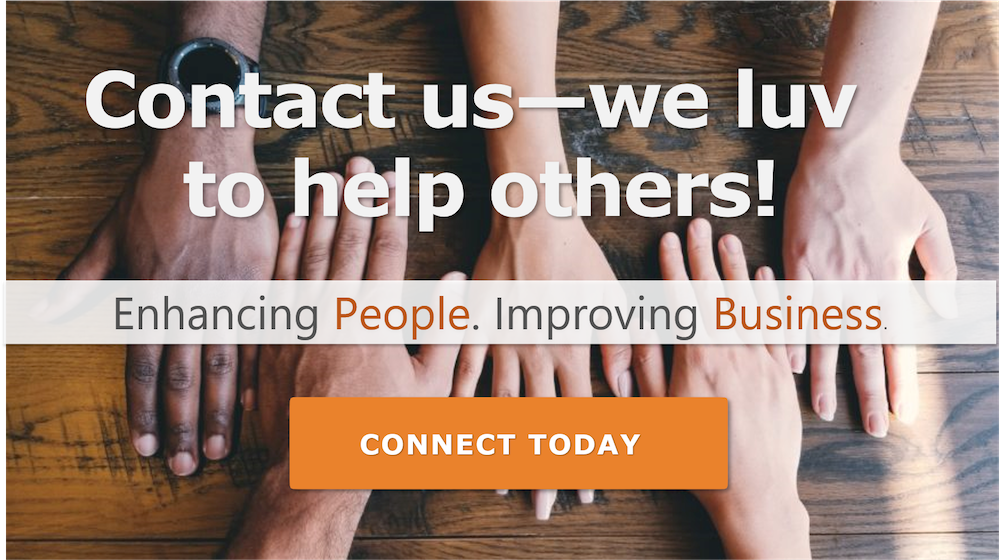Yes, Burnout is a Real Thing.
We’ve all had additional burdens placed on us the last year and a half. We’ve been tired, cranky, overworked and confused about where to draw the line between our responsibilities and taking time for ourselves.
We have left no room to deal with everyday stressors at home or work in our crowded schedule. We’ve been working at max speed, and when the brakes go out, we will hit the wall hard.
It could be a small thing someone asks of you, and suddenly you have a meltdown. The chronic stress you’ve been under feels like that wall you crashed into fell on top of you.
Signs of Employee Burnout
According to AmTrust Financial, in 2019, financial concerns were among the leading causes of stress for Americans. Today, concerns about businesses closing, uncertainty about the virus, and the increased stress level due to stay-at-home orders top the list. Meaning, employee wellness must be a priority.
New problems created by the pandemic need innovative solutions, but they also place extra demand on an already large workload. Without proper self-care and employer support, burnout will happen before you know it’s coming.
A new survey of 3,900 employees and business leaders across 11 nations discovered that burnout is equal between employees working remotely (43%) and those
in a physical workplace (43%).
SPECIAL TREAT! GET A SNEAK PEEK AT JUST ONE OF THE
WEBINARS WE OFFER TO OUR CLIENT PARTNERS!
The survey also showed that over half (59%) of employees and leaders say they have taken some measures to prevent burnout. However, 29% of employees wish organizations had more empathy towards their situations.
There is no single answer for preventing employee burnout. Different people, different industries, different leaders mean there will be many different answers.
But before you can address employee burnout, you have to recognize it. There are three distinct characteristics to look for:
• Emotional exhaustion
• Lack of energy
• Job dissatisfaction
These days it may be easier to look for people who don’t exhibit those signs; however, the person feeling burnt out will exaggerate these characteristics.
Employee burnout also shows when an employee begins having health problems and increased absenteeism.
They may also:
• Disengage/withdraw
• Appear demoralized
• Constantly be worried
• Leave the company
Remote workers
Remote workers may be overwhelmed adjusting to a home office where they must take care of children, become homeschool teachers, and still maintain a household.
Though some people enjoy working from home, many do not. They thrive on human interaction and, without it, become isolated, which causes further mental distress. Burnout for them may look a little different.
Many remote workers feel like they should always be available if they are working from home. They take on extra work and sacrifice downtime or family time.
The pressure of it all can become too much to handle, causing employees to become stressed, unhappy, and unengaged.
Signs of burnout for remote workers include:
• Lack of concentration
• Absenteeism
• Hopelessness
• Disengagement
• Irritable or easily upset/angry
What works for in-office employees may not work well for the remote workforce. Flexibility and consideration for each worker’s circumstances will be paramount to retaining happy and healthy employees. Catch burnout symptoms early and don’t hesitate to step in.
Reducing and Preventing Employee Burnout
As tired as we all get about the constant talk around COVID-19, we have to face the simple fact that things will not be going back to the normal we knew.
Employee burnout today doesn’t necessarily happen the same way it did two years ago, and it can’t be treated with the same techniques either.
Know your workforce.
What do they need most? For many, it is their paycheck. A survey of more than 3,000 workers showed that approximately 80% of hourly workers had less than $500 saved for an emergency, and 52% had $0 saved.
A group of employers realized how important it was to get money to their employees and teamed up with a financial institution to give employees access to 50% of their pay before payday. It kept employees from losing their homes and allowed them to put food on the table, relieving a significant stressor.
Knowing what your employees need most and working out a strategy to get it to them will give them what they need to maintain a work/life balance.
Put your people first
The decisions made by leaders tell employees how important they are to an organization. Discover the root cause of the stress using employee surveys. Use data-based decisions and strategies to solve the problem and be supportive of people’s fears and concerns.
Listen with empathy and call for solutions that resolve issues rather than band-aid them.
"When you give people what they need to thrive, don’t be surprised when that is exactly what they do."
Offer Assistance
Supervisors should work with their employees and talk openly about how each person and their work is being affected. Expectations should be clear and reasonable. “Reasonable” means different things to different people, so get clarification to assess if your expectations are reasonable.
If your organization has mental health services available for employees, ensure this benefit is communicated clearly. Many people take advantage of these services during times when coping is difficult.
Your people should feel:
• Validated
• Heard
• Valued
• Supported
If you haven’t implemented a wellness program or employee assistance program (EAP), now is the perfect time to do so. It shows employees that you care about their work-life balance and that you are flexible.
Burnout happens because people are pushed too hard with unrealistic productivity goals. They feel misunderstood and unhappy. Be open to adapting the work environment to suit individual needs and improving your communication with your workforce.
A little recognition for the hard work and dedication your employee’s show would go a long way as well. Workers who feel taken advantage of are on the fast track to burnout. Make your employee’s a priority. Be human before business-person.
Knowing you care keeps employees happy and engaged. It cuts your turnover rate and prevents burnout.
When you partner with Ulliance, our Life Advisor Consultants are always just a phone call away to teach ways to enhance your work/life balance and increase your happiness. The Ulliance Life Advisor Employee Assistance Program can help employees and employers come closer to a state of total well-being.
References
Control and Prevention: https://www.cdc.gov/coronavirus/2019-ncov/community/mental-health-non-healthcare.html
Employee Burnout During COVID-19. (2020). Retrieved from AmTrust Financial: https://amtrustfinancial.com/blog/small-business/how-to-prevent-employee-burnout-during-coronavirus
Moss, J. (2020, September 28). Preventing Burnout is About Empathic Leadership. Retrieved from Harvard Business Review: https://hbr.org/2020/09/preventing-burnout-is-about-empathetic-leadership
Physical Safety, Psychological Security, Job Stability: Employees Worldwide Share Top COVID-19 Concerns for the Workplace of Today and Tomorrow. (2020, September 15). Retrieved from Kronos: https://www.kronos.com/about-us/newsroom/physical-safety-psychological-security-job-stability-employees-worldwide-share-top-covid-19-concerns



